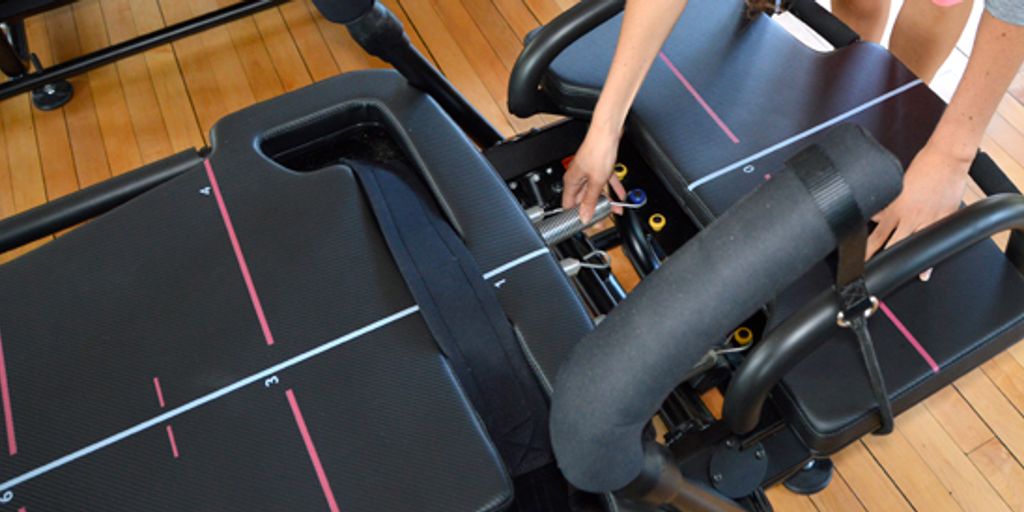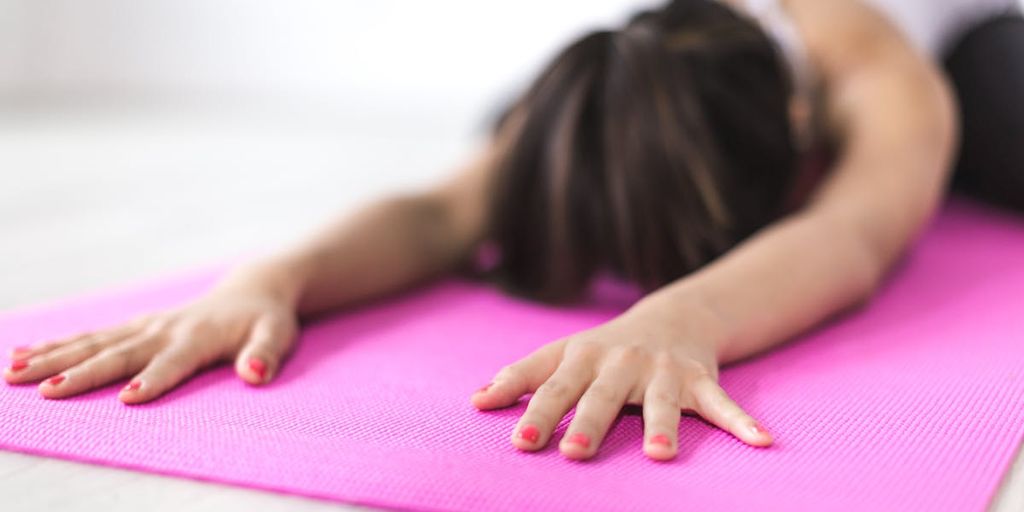
The Ultimate Guide: How to Clean a Yoga Mat Effectively
Maintaining a clean yoga mat is essential for both hygiene and the longevity of the mat. This guide provides comprehensive insights into the various aspects of cleaning a yoga mat effectively, from understanding the importance of regular cleaning to selecting the right cleaning materials and techniques. Whether you're dealing with different types of mats or stubborn stains and odors, this guide covers everything you need to know to keep your yoga mat in pristine condition.
Key Takeaways
- Understand the health benefits and necessity of regular yoga mat cleaning to prevent bacterial buildup and enhance the mat's longevity.
- Explore the pros and cons of natural versus chemical cleaners and learn how to make effective DIY cleaning solutions.
- Follow a detailed, step-by-step guide that includes daily cleaning techniques, deep cleaning processes, and tips for proper drying and storage.
- Learn specific cleaning methods tailored to different types of yoga mats, such as rubber, cotton, jute, PVC, and TPE mats.
- Discover natural remedies for removing stains and odors, and consider the benefits of professional cleaning services when necessary.
Understanding the Importance of Cleaning Your Yoga Mat
Preventing Bacterial Build-Up
Regular cleaning of your yoga mat is crucial to prevent the accumulation of bacteria and microbes, which can pose health risks. Maintaining a clean mat ensures a safer practice environment by minimizing the potential for infections.
Enhancing Mat Longevity
Proper care and regular cleaning significantly extend the life of your yoga mat. By removing dirt, oils, and sweat after each use, you protect the material integrity of the mat, ensuring it remains functional and supportive for longer.
Improving Practice Hygiene
A clean yoga mat is essential for a hygienic practice. It helps in maintaining the aesthetic appeal and the overall cleanliness of your practice space, which can enhance your yoga experience and focus.
Choosing the Right Cleaning Materials
Natural vs. Chemical Cleaners
Choosing between natural and chemical cleaners is crucial for maintaining the health of your yoga mat and your own well-being. Natural cleaners, such as vinegar or witch hazel, are gentle and eco-friendly. On the other hand, chemical cleaners offer powerful disinfection but may degrade the mat's material over time.
Essential Tools for Cleaning
To effectively clean your yoga mat, you'll need a few basic tools:
- A soft cloth or sponge
- Mild soap or specialized yoga mat cleaner
- Water
- A towel for drying
This simple toolkit will help you maintain hygiene and extend the lifespan of your mat.
DIY Cleaning Solutions
Creating your own cleaning solutions can be both cost-effective and environmentally friendly. A popular DIY solution involves mixing water with a small amount of gentle soap or essential oils. This mixture can be applied with a spray bottle, making it easy to distribute evenly across the mat's surface.
Step-by-Step Guide on How to Clean a Yoga Mat
Daily Cleaning Techniques
To maintain the hygiene of your yoga mat, it's essential to adopt daily cleaning techniques. Wipe down your mat with a damp cloth after each use to remove sweat and oils. For a quick clean, you can use a spray made of water and a few drops of essential oil, which not only cleans but also leaves a refreshing scent.
Deep Cleaning Process
Every few weeks, your yoga mat deserves a deeper clean to remove build-up and maintain its grip. Submerge your mat in a solution of warm water and mild detergent, gently scrubbing to remove stubborn dirt. Rinse thoroughly to ensure no soap residue remains, as this can make the surface slippery.
Drying and Storage Tips
Proper drying and storage are crucial to prevent mold and bacteria buildup. After cleaning, hang your mat to dry completely in a well-ventilated area. Avoid direct sunlight which can degrade the material. Once dry, roll your mat loosely and store it in a cool, dry place to maintain its shape and longevity.
Addressing Different Types of Yoga Mats
Cleaning Rubber Mats
Rubber yoga mats require gentle cleaners to avoid degrading the material. A solution of water and mild soap or a specialized yoga mat cleaner works best. Avoid using harsh chemicals as they can break down the rubber and shorten the mat's lifespan.
Care for Cotton and Jute Mats
Cotton and jute yoga mats are highly absorbent and can trap odors and bacteria. It's essential to clean these mats regularly with a mild detergent and air dry them thoroughly to prevent mold and mildew. Consider using a vinegar solution for a deeper clean.
Maintaining PVC and TPE Mats
PVC and TPE mats are less porous than natural materials, making them easier to wipe down with a simple cleaning solution. For a thorough clean, use a mixture of water and gentle soap. Be sure to dry these mats completely to maintain their integrity and prevent slipping during use.
Removing Stains and Odors Effectively
Natural Remedies for Stain Removal
To tackle stains naturally, consider using a mixture of vinegar and water. This solution not only cleans but also disinfects without harsh chemicals. For tougher stains, applying a paste of baking soda and water directly to the stain before a general wash can be effective.
Dealing with Persistent Odors
Persistent odors can be addressed by adding a few drops of essential oils like lavender or tea tree to your cleaning solution. This not only helps in odor removal but also imparts a refreshing scent to your yoga mat.
Preventive Measures for Stains and Smells
Regular cleaning is crucial to prevent stains and odors. After each use, wiping your mat with a damp cloth can remove immediate dirt and sweat, reducing the buildup of grime and smell over time.
The Role of Professional Cleaning Services
When to Consider Professional Cleaning
Professional cleaning services for yoga mats should be considered when regular maintenance does not remove deep stains or odors, or when the mat is used frequently in shared spaces. This ensures a higher standard of hygiene and prolongs the mat's usability.
Benefits of Professional Services
Professional cleaning can extend the life of your yoga mat by using specialized equipment and solutions that are often more effective than at-home methods. Services like LightWorker UV LLC offer chemical-free sanitizing, which is crucial for maintaining the mat's integrity and user's health.
Choosing the Right Service Provider
When selecting a professional cleaning service, consider factors such as the technology used, the chemicals or solutions applied, and customer reviews. It's important to choose a provider that aligns with your hygiene standards and environmental values.
In today's fast-paced world, maintaining a clean and healthy environment is crucial, and professional cleaning services play a pivotal role in achieving this. At our company, we understand the importance of a pristine space, whether it's for work, leisure, or living. Our team of experts uses state-of-the-art equipment and eco-friendly products to ensure a thorough clean every time. Don't let dirt and clutter hold you back. Visit our website to learn more about our services and how we can help you create a cleaner, healthier environment.
Conclusion
Keeping your yoga mat clean is essential for maintaining both hygiene and the longevity of the mat. By following the simple steps outlined in this guide, you can ensure that your mat remains a safe and comfortable space for your practice. Whether you opt for regular light cleans or deep cleaning methods, remember that the effort you put into caring for your mat reflects the respect you have for your yoga journey. Embrace these cleaning practices as part of your holistic approach to yoga, ensuring that your mat is as ready as you are for each session.
Frequently Asked Questions
How often should I clean my yoga mat?
It's recommended to clean your yoga mat after every use to prevent bacterial build-up and maintain hygiene. For light users, cleaning once a week may suffice.
Can I use household cleaners on my yoga mat?
It's best to avoid harsh household cleaners as they can damage the mat's material. Use specific yoga mat cleaners or mild, natural solutions like diluted vinegar or essential oils.
What is the best way to dry a yoga mat after cleaning?
After cleaning, hang your yoga mat in a well-ventilated area away from direct sunlight. This helps prevent degradation of the material and ensures it dries completely.
Are there any specific cleaners for different types of yoga mats?
Yes, different materials like rubber, PVC, or TPE may require specific cleaners or care methods to maintain their quality and functionality.
How can I remove stains from my yoga mat?
For stains, use a gentle scrubbing motion with a soft brush and a suitable cleaner. For tougher stains, a mixture of baking soda and water can be effective.
Is it worth using professional cleaning services for yoga mats?
Professional cleaning can be beneficial for deep cleans or if the mat is heavily soiled. It ensures thorough cleaning without damaging the mat, which can be particularly useful for high-end or specialty mats.


